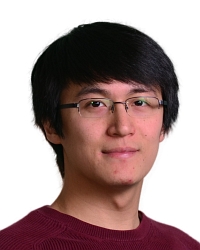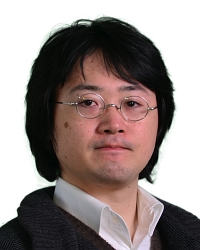TR2021-142
Machine Learning for design and optimization of photonic devices
-
- , "Machine Learning for design and optimization of photonic devices" in Machine Learning for Future Fiber Optic Communication Systems, Alan Pak Tao Lau and Faisal Nadeem Khan, Eds., DOI: 10.1016/B978-0-32-385227-2.00018-8, pp. 337-374, Academic Press, November 2021.BibTeX TR2021-142 PDF
- @incollection{Kojima2021nov,
- author = {Kojima, Keisuke and Tang, Yingheng and Wang, Ye and Koike-Akino, Toshiaki},
- title = {{Machine Learning for design and optimization of photonic devices}},
- booktitle = {Machine Learning for Future Fiber Optic Communication Systems},
- year = 2021,
- editor = {Alan Pak Tao Lau and Faisal Nadeem Khan},
- pages = {337--374},
- month = nov,
- publisher = {Academic Press},
- doi = {10.1016/B978-0-32-385227-2.00018-8},
- isbn = {978-0-323-85227-2},
- url = {https://www.merl.com/publications/TR2021-142}
- }
- , "Machine Learning for design and optimization of photonic devices" in Machine Learning for Future Fiber Optic Communication Systems, Alan Pak Tao Lau and Faisal Nadeem Khan, Eds., DOI: 10.1016/B978-0-32-385227-2.00018-8, pp. 337-374, Academic Press, November 2021.
-
MERL Contacts:
-
Research Areas:
Communications, Electronic and Photonic Devices, Machine Learning, Optimization, Signal Processing
Abstract:
This chapter discusses how we can apply deep learning to photonic device design problems, by focusing on three types of modeling approaches. In forward modeling, the trained deep neural network (DNN) is integrated in the optimization loops of classical optimizers. In inverse modeling, the trained DNN directly constructs a structure with the desired target performance given as input. Generative modeling produces a series of optimized designs for a target performance. We take an example of designing compact silicon-on-insulator (SOI)-based 1 x 2 power splitters with various target splitting ratios, which can be a building block for various integrated photonic circuits. We also give an overview of their applications to metasurfaces/plasmonics, other types of photonic devices in these three categories. These approaches are expected to be applicable to a broad range of design for various types of photonic devices.

